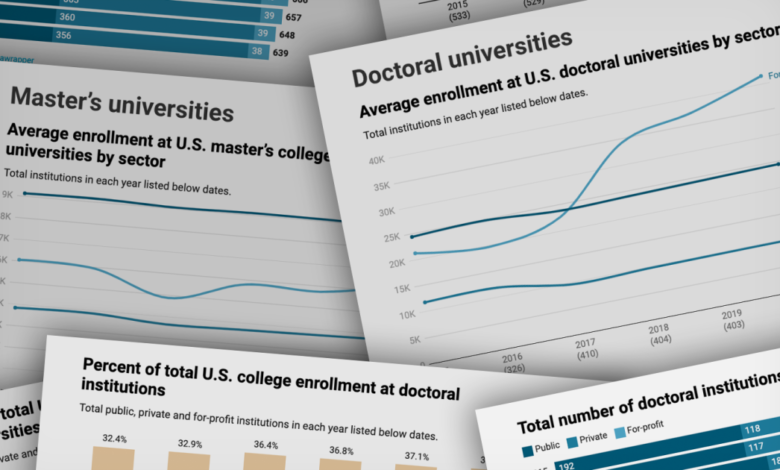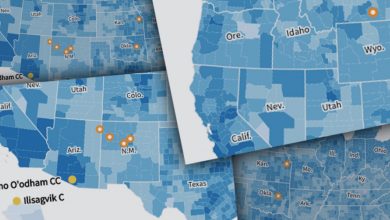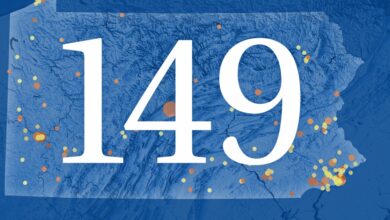Which College Groups Have the Highest Enrollment?

Statistical snapshots of college enrollment by Carnegie classification for doctoral universities, master’s colleges and universities, baccalaureate colleges and baccalaureate/associate colleges.




Source: Chronicle analysis of U.S. Department of Education data
Note: Numbers of institutions and enrollment figures are drawn from fall-2015 to fall-2019 data for degree-granting four- and two-year institutions eligible to participate in Title IV federal student-aid programs. Classifications are from the 2018 Carnegie Classification of Institutions of Higher Education, a project of Indiana University’s Center for Postsecondary Research. Those classifications were determined with 2016-17 data. Doctoral universities are those that awarded at least 20 research/scholarship doctorates, or at least 30 professional-practice doctorates across at least two programs. The level of research activity for universities reporting more than $5 million in research spending was determined with a complex formula. Master’s institutions awarded at least 50 master’s degrees but fewer than 20 research doctorates. Larger programs awarded at least 200 degrees; medium, 100 to 199; smaller, 50 to 99. Institutions that granted fewer than 50 master’s degrees were also included in “smaller” if they offered exclusively or mostly professional/graduate degrees. Baccalaureate colleges are generally ones that awarded at least 50-percent bachelor’s degrees and fewer than 50 master’s degrees. They are considered to have an arts-and-sciences focus if at least half the bachelor’s degrees awarded were in the arts and sciences; otherwise, they are classified as “diverse fields.” Baccalaureate/associate colleges include those that offered at least one bachelor’s-degree program but conferred more than 50 percent of degrees at the associate level. Such colleges are classified as “mixed” if they conferred more than 10 percent of degrees at the baccalaureate level, and as “associate dominant” if less than 10 percent. Associate colleges are categorized based on how much they focused on career and technical fields that require only an associate degree, compared with fields that require transfer to another institution for further education to obtain related employment. They are also classified by their traditional versus nontraditional student mix: the share of degree-seeking, full-time, and younger students compared with non-degree-seeking and part-time students. Tribal colleges and special-focus institutions are excluded from other categories. Branch campuses are counted separately if reported separately in Ipeds. Enrollment averages are weighted by the number of institutions in each classification. Unclassified institutions were excluded from the data.
Source link






